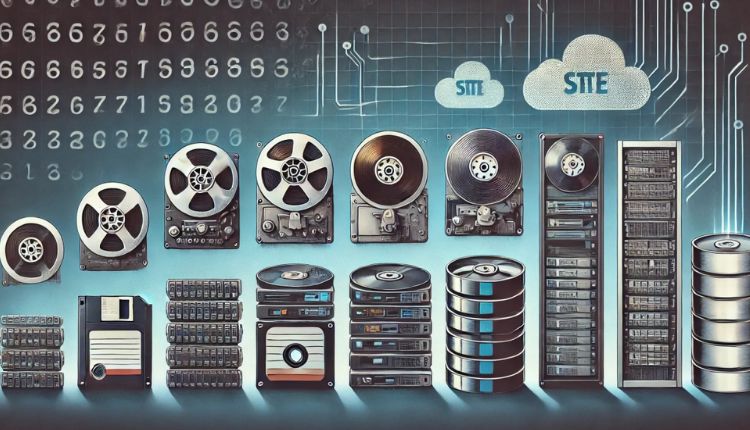The march of technology is relentless, a continuous wave of innovation that turns yesterday’s marvel into tomorrow’s relic. In the realm of data storage, this truth is particularly stark. We have moved from gargantuan, room-sized magnetic drums to the ethereal omnipresence of the cloud. Yet, nestled within this digital progression is a small, indispensable item that has not only survived but thrived by adapting: the USB flash drive. More than just a simple utility, the modern flash drive, particularly when tailored for promotional purposes, has become a powerful, tangible link between a brand and its customer.
The Historical Arc of Portable Memory
To fully appreciate the impact of the modern flash drive, it is essential to contextualize it within the sweeping history of portable data storage. Before the convenience of solid-state memory, the options for moving digital information were often bulky, fragile, or low-capacity. The journey began with punched cards—an early form of machine-readable data dating back to the late 19th century, famously used for the 1890 US Census. These were cumbersome, requiring specialized readers and being far from “portable” in the modern sense.
The mid-20th century introduced magnetic tape, followed by the breakthrough of the floppy disk. Starting as 8-inch flexible magnetic discs and shrinking down to the familiar 3.5-inch format, these disks reigned supreme for decades, offering a revolution in accessibility. However, their physical limitations—low capacity, susceptibility to magnets, and mechanical failure—paved the way for a more robust successor. The rise of the compact disc (CD) and later the digital versatile disc (DVD) offered higher storage but required an optical drive and were often write-once propositions, limiting their everyday flexibility. This continuous innovation in how we store and transmit information has led directly to the development of incredibly dense, small, and reusable flash memory.
For a fascinating look at this lineage, one can explore the broader context of the history of data storage. The transition from purely mechanical and magnetic methods to solid-state electronics was the crucial step that made devices like the USB flash drive possible, ushering in an era of true pocket-sized power.
Why the Custom USB Flash Drive Endures
Despite the rise of cloud services and lightning-fast internet, the need for a physical, self-contained data transfer and storage device remains critically important for several key reasons:
- Tangibility and Reliability: A cloud link can break, a Wi-Fi signal can fail, and a subscription can expire. A physical flash drive, however, works in isolation, offering an immediate and reliable solution for data sharing, backups, or offline presentations. It provides a tactile sense of security for important files.
- Security and Control: For sensitive or confidential data, storing it on a drive that is physically disconnected from a network is often the preferred security protocol. Flash drives can be encrypted, password-protected, and kept under lock and key, giving the user absolute control over access.
- Universal Compatibility: The USB standard is ubiquitous. Practically every modern computer, TV, car, and many other digital devices possess a USB port, making the flash drive a truly universal transfer medium, far surpassing proprietary connectors or operating system-specific protocols.
- No Internet Dependency: In environments with poor or no internet connectivity—think construction sites, remote field operations, or international travel—the flash drive is an essential workhorse.
The Strategic Marketing Power of Customization
Where the common, off-the-shelf flash drive is a commodity, the custom USB flash drives elevate the product to a high-value marketing asset. Companies leverage personalization to transform this utility into a miniature, perpetual billboard. By transforming the shell of the device, brands create an impression that lasts far longer than a digital ad.
The personalization process goes beyond simply printing a logo; it involves a sophisticated marriage of form and function:
- Shape and Design: Drives can be molded into virtually any shape—a miniature product, a company mascot, or an architectural element. This distinct form factor makes the drive memorable and instantly associated with the brand.
- Material Choice: Options range from eco-friendly bamboo and recycled plastic to premium metals and leather, allowing the aesthetic of the drive to align perfectly with a brand’s corporate identity and values.
- Preloaded Data (AutoRun/Permanent Files): This is where the marketing campaign is solidified. A company can preload its entire digital press kit, product catalogs, software demos, or high-resolution branding videos onto the drive. This ensures that the recipient has immediate access to the intended information, guaranteeing that key content is delivered and remains available, regardless of their online status.
- Color Matching and Finish: Utilizing precise pantone color matching and specialized finishes (such as matte, glossy, or rubberized textures) ensures brand consistency and communicates attention to detail.
The Applications Across Industries
The utility of a customized flash drive spans almost every sector:
- Photography and Videography: Delivering final photo and video packages on a beautifully branded drive provides a high-end, professional presentation that clients value and share.
- Education and Training: Distributing course materials, recorded lectures, or software on a custom drive ensures every student has the necessary tools, circumventing institutional network bottlenecks.
- Real Estate and Construction: Loading floor plans, high-resolution property tours, and legal documents onto a branded drive offers clients a comprehensive, take-home package.
- Corporate Events and Trade Shows: Handing out a branded drive preloaded with white papers and contact information ensures that the investment in a trade show booth continues to yield returns long after the event has concluded. It provides a more substantial giveaway than a simple business card.
- Healthcare and Legal: Securely transferring patient records, legal depositions, or complex diagnostic imagery in a HIPAA or GDPR compliant manner, where a physical chain of custody is paramount.
Considerations for Optimal Deployment
To maximize the impact of custom flash drives, businesses must move beyond simply purchasing the cheapest bulk option. A strategic approach requires careful consideration of several factors:
- Capacity Planning: The storage size should align with the preloaded content and the perceived value for the recipient. A large capacity (e.g., 16GB or 32GB) signals greater value and ensures the recipient will reuse the drive, extending the brand’s exposure.
- Interface Standard: While USB-A is still common, the increasing prevalence of USB-C in modern laptops and mobile devices makes offering a dual-connector or exclusively USB-C drive a forward-thinking choice.
- Durability: Depending on the target audience and expected usage, a more robust material or design (like a metal swivel or a rubberized casing) can significantly increase the lifespan of the promotional item.
- Data Retention and Reusability: Some drives can be partitioned, allowing for a permanent, read-only partition for marketing materials and a separate, writable partition for the user’s personal files. This ensures the company’s content is never deleted while maintaining the utility the user desires.
By focusing on these details, a company transforms a simple data storage device into a sophisticated tool of engagement, providing a practical gift that recipients will keep and use frequently, thereby generating thousands of brand impressions over its lifetime. The personalized nature of the device fosters a positive, lasting association with the brand’s identity, converting utility into loyal visibility.
Conclusion
The journey from early, cumbersome data storage methods to the sleek, high-capacity USB flash drive is a testament to the continuous human desire for portable and reliable information management. Today, the custom USB flash drive represents the ultimate convergence of utility and branding. It is a powerful, discreet, and enduring piece of technology that bypasses the fleeting nature of digital advertising, offering a tangible connection in an increasingly virtual world. For any business serious about leaving a lasting, professional impression, investing in a high-quality, branded flash drive is not an expense—it is a strategic marketing necessity that delivers content, security, and a physical representation of the brand, all in the palm of a hand.
FAQs about Custom USB Flash Drives
Q1: What is the main advantage of a custom flash drive over using cloud storage for distribution?
A1: The main advantage is reliability and tangibility. Custom flash drives guarantee that the recipient receives the information immediately, regardless of their internet access or Wi-Fi quality. They also offer a physical, long-lasting promotional item that provides thousands of passive brand impressions over its useful life, unlike a fleeting email or cloud link.
Q2: How is the ‘custom’ aspect achieved beyond just adding a logo?
A2: Customization goes far beyond a logo print. It includes molding the drive casing into a unique shape that represents the brand or product (e.g., a miniature car, a shoe, a mascot), selecting premium or eco-friendly materials (wood, metal, leather), and pre-loading data with non-erasable files (known as permanent data or “lockout” partitions) to ensure marketing content remains on the drive.
Q3: Are custom flash drives still relevant with all the advancements in cloud technology?
A3: Absolutely. They fill a crucial gap for secure, offline data transfer. They are essential for corporate presentations, large file transfers that would be too slow over email, event distribution (where attendees may lack immediate internet), and in sectors like photography, legal, and healthcare where a secure, physical chain of custody for data is often required.
Q4: What is preloading, and why is it important for a marketing campaign?
A4: Preloading is the process of putting digital content—such as product catalogs, software trials, videos, or company bios—onto the flash drive before it is distributed. It is vital for a marketing campaign because it guarantees that the recipient receives the full marketing message and collateral instantly, maximizing the value of the giveaway.
Q5: What are the best practices for choosing the capacity of a custom flash drive?
A5: Best practice is to choose a capacity that is generous enough to be useful to the recipient after the preloaded content is accounted for. A smaller drive, like 4GB, might be sufficient for a press kit, but a 16GB or 32GB drive is more likely to be used regularly by the recipient, thereby increasing brand exposure significantly.






